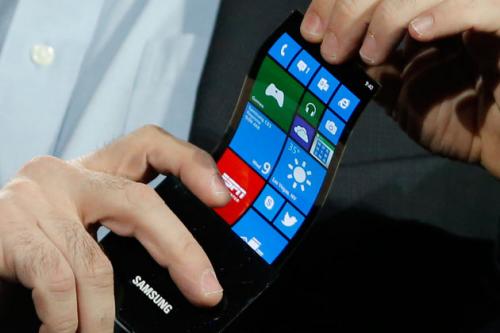Due to Light Weight and Rugged Material, Market of Flexible Displays is in Demand Globally

Flexible display is an advanced form of display technology. The display technology has evolved from Cathode Ray Tube (CRT) to Liquid Crystal Display (LCD) and Light Emitting Diode (LED) displays, and recently to flexible displays. Flexible displays are flexible in nature and can be rolled, twisted and folded without any distortion in the displayed image quality. These flexible displays are applied in various applications such as smartphone, laptops, tablets and consumer gadgets (watches).
Brochure of Flexible Displays Market is available at:
http://www.transparencymarketresearch.com/sample/sample.php?flag=B&rep_id=2979
These flexible displays are light weight, rugged, non brittle, very thin, driven by low power and portable. These benefits are making flexible displays popular among the consumers as compared with the flat displays. These benefits are driving the flexible displays market. Currently materials for flexible displays are derived largely from organic compounds and molecules. These materials furnish low resistance abilities towards high temperature. Designers and manufacturers thus cannot implement traditional semiconductor fabrication techniques to these substrates. For the same reasons, constructing a flexible OLED (FOLED) display is extremely challenging.
Samsung is still using Low Temperature Poly-silicon (LTPS) for its plastic based panels. The process of production for LTPS is extremely hot for the plastic substrate and melts the substrate and offers challenge to fabrication of FOLED. Currently Samsung deposits the LTPS transistors on glass surface and the glass is delaminated afterwards. LG Display is employing an Oxide-TFT that is easier to produce on a flexible substrate. Penetration of flexible displays in diverse applications such as military and digital signage holds lucrative opportunities for the flexible display market.
Materials used in the manufacturing of flexible displays include glass-reinforced plastic (GRP) and polymers. Primarily two types of polymers are used in the flexible displays such as amorphous polymer and crystalline polymer. Various components used in the flexible displays consists emissive layer, substrate, conductive layer, backlight panels and others such as cathode and anode. These flexible displays are employed in several applications. These applications are smartphone, E-reader, E-paper, tablet, laptop, wearable display and television. Multiple types of display modes such as Organic Light Emission Diode (OLED), Electrophoretic display (EPD) and Liquid Crystal Display (LCD) are extensively explored for the purpose of application to flexible displays. Various types of flexible display manufacturing technology include photographic technology, flexible flat panel display technology and flexible plasma display technology.
Flexible display making companies are looking forward to launch flexible display phone commercially. LG Electronics launched world’s first flexible six-inch smartphone, G Flex in 2013. Other big companies, such as Samsung and others are also moving ahead in the direction of commercializing flexible displays. Samsung unveiled the world’s first foldable AMOLED display during Consumer Electronics Show (CES) 2014.
Key companies in the market include
> Atmel Corporation
> Corning Incorporated
> Dupont Display
> Hewlett-Packard Company
> LG Display Co. Ltd.
> Philips Electronics
> Sony Corporation
> Universal Display Corporation
> Polymer Vision
> Novaled AG
> Materion Corporation
> Kent Displays Inc.
> E Ink Holdings Inc.
> Samsung Display
Report Customization can be done at:
http://www.transparencymarketresearch.com/sample/sample.php?flag=CR&rep_id=2979
Post Your Ad Here
Comments